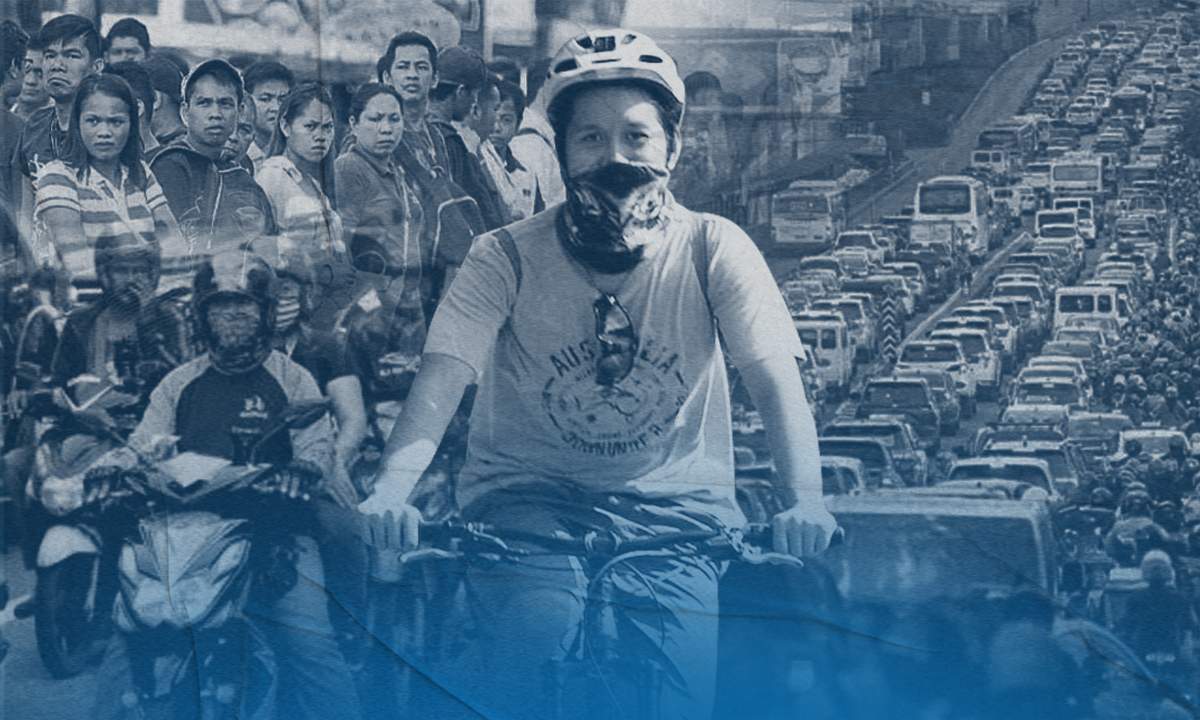It was only last year when the MMDA, or Metropolitan Manila Development Authority, proposed the conversion of the EDSA bike lane into a shared one, but now, the lane, which has been dedicated to cyclists since 2020, could disappear from the 23.8-kilometer highway if MMDA had its way.
This, as MMDA chairperson Don Artes said that the Epifanio de los Santos Avenue “is probably the only major highway in the world where there are bikes,” while laying bare proposals to reduce the size of, or completely remove the bike lane which was designated in 2020 when public transport ground to a halt because of COVID-19 lockdowns.
As he and the Department of Transportation (DOTr) revealed, proposals have been submitted to get rid of bike lanes, or at least modify it.
The MMDA reason? Only a few, or 1,586, use bike lanes daily while 170,000 motorcycles use EDSA.
READ: Why bicycles, motorcycles can’t share lanes
This was Artes’ same reason last year, when he revealed that the MMDA was considering the conversion of the bike lane into a shared lane, saying that the bike lane is underutilized. This proposal, however, did not take off because “no one agreed.”
READ: MMDA looking for other options to shared bicycle – motorcycle lane plan
Not even a year has passed, Artes highlighted MMDA’s bike count again as he laid bare plans to modify the exclusive lane, pointing to concerns over its underutilization. He said extensive discussions have already been held between government agencies.
But the DOTr does not share the same view.
Last April 21, a few days before Artes made his bike lane remark, Transportation Secretary Jaime Bautista said the DOTr is considering the dedication of a lane on EDSA that is exclusive for motorcycles, pointing out that “we already have a busway and on the right side, we have a bicycle lane.”
He said the motorcycle lane could be placed next to the bike lane.
Then on April 26, the DOTr said it is committed to promote pedestrian-oriented spaces such as walkways and bicycle lanes, stressing that non-motorized modes of transport, like cycling and walking, are promoted in line with the National Transport Policy (NTP) and the Philippine Development Plan (PDP) 2023-2028.
“The DOTr heeds to the long-overlooked clamor of public and active transport commuters to have better commuting experience by pushing for expanded and safer walkways and bike lanes, most especially on national roads,” the DOTr said. EDSA is a national road.
Bautista also stressed on Monday, April 29, the importance of active transport, like cycling, pointing out that it does not only support the riding public but also eases traffic congestion. “Perhaps we need proper enforcement so that we can use our bike lanes effectively,” he said.
READ: DOTr stresses proper bike lane enforcement
The DOTr is implementing the active transport program, as provided by the NTP and PDP 2023-2028 initiatives. The program has a P1 billion budget for 2024, while P5 billion has been allocated since 2020, Bautista said at the inauguration of an active transport infrastructure in San Fernando, Pampanga.
Direct contradiction
As pointed out by the group Move As One, the removal of bicycle lanes from EDSA is a direct contradiction of DOTr, and even President Ferdinand Marcos Jr.’s pronouncements on active transport as part of the comprehensive solution to the transportation crisis.
Back in 2022, permanent bike lanes were one of Marcos’ and Vice President Sara Duterte’s campaign promises, saying that the COVID-19 crisis has exposed the need to develop active transport as a “practical and healthy alternative to existing modes.”
READ: Marcos Jr., Sara vow to include bike lanes in future gov’t road projects if elected
Based on data from the Japan International Cooperation Agency, the economic cost of traffic chaos in Metro Manila is P2.4 billion a day in 2012; P3.5 billion a day in 2017; and P4.9 billion a day in 2022. Without effective intervention, economic loss could hit P9 billion a day in 2030.
Move As One likewise said the removal of bike lanes “violates the right of many Filipinos who own bicycles to safe and convenient mobility,” pointing to Social Weather Stations data as of March 2023 that 24 percent of Filipino households own bicycles, or a 4:1 ratio of bike owners to car owners.
“The coalition calls on Artes to fully adhere to President Marcos Jr.’s policy to support active transportation and to honor the president and vice-president’s campaign promise to make bike lanes permanent in the country” Move As One said in a statement.
RELATED STORY: DOTr to continue promoting cycling, walking, light electric vehicles
“This includes Artes’ rethinking of his ill-conceived ban on light electric vehicles, an important mode of transportation for the 94 percent of Filipinos who do not own cars,” it said, stressing that Artes should devote his time and energies as a public official to the safe and sustainable mobility of people.
Looking back, the MMDA said battery-operated vehicles are not safe on national roads, so it issued a directive banning these vehicles on selected highways starting April 15. Marcos ordered the MMDA to go slow and leave e-bikes and e-trikes alone for at least one month.
READ: Marcos orders MMDA: Grace period before e-trike ban
But critics had said the government was supposed to provide protected lanes on key roads to make it safe for users of e-bikes and e-trikes to traverse national roads in Metro Manila.
